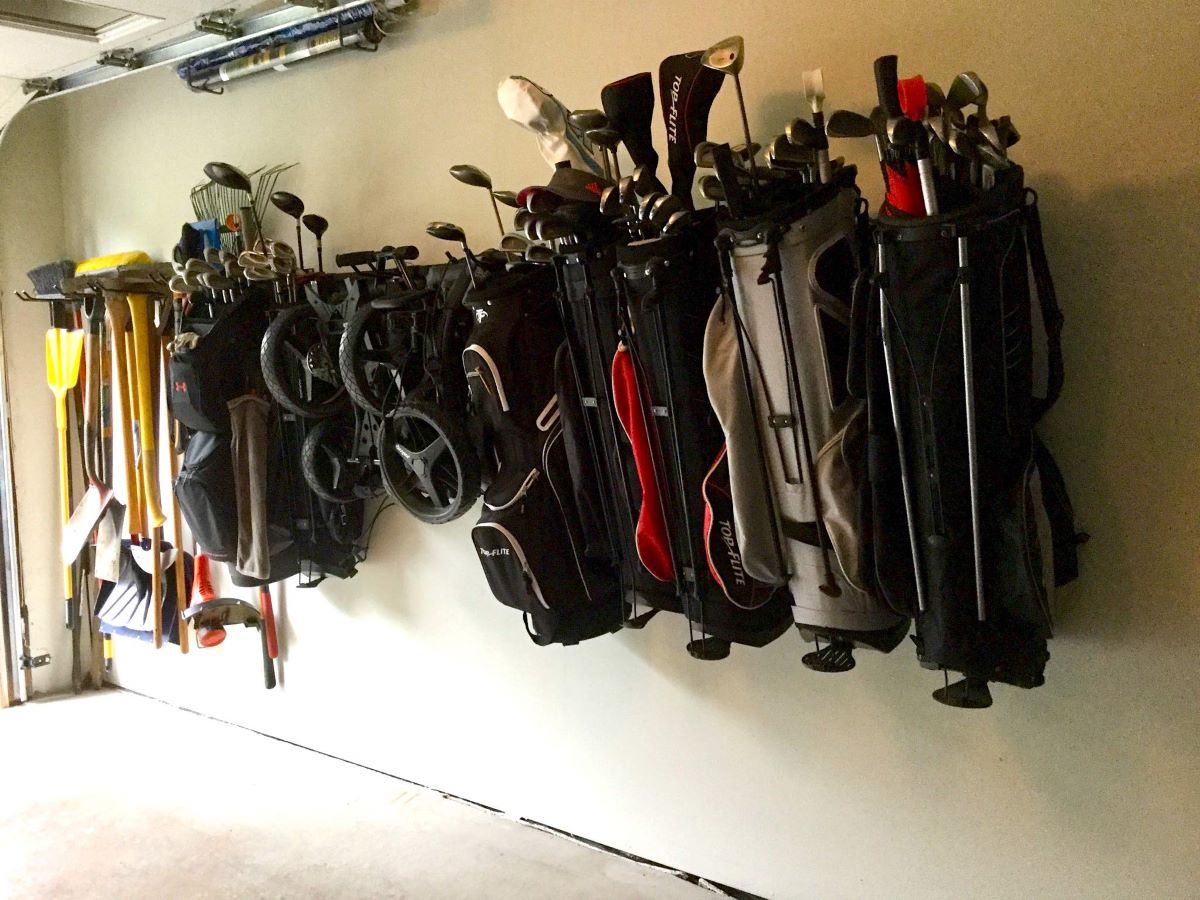

Articles
How To Store Golf Clubs
Modified: March 2, 2024
Learn the best techniques for storing golf clubs in this informative articles. Keep your clubs safe and protected for long-lasting performance.
(Many of the links in this article redirect to a specific reviewed product. Your purchase of these products through affiliate links helps to generate commission for Storables.com, at no extra cost. Learn more)
Introduction
Golf is a sport that requires precision and skill. If you’re an avid golfer, you know how important it is to take care of your equipment, especially your golf clubs. Proper storage of golf clubs is crucial to maintain their performance and prolong their lifespan. In this article, we will guide you through the process of storing golf clubs effectively to keep them in top condition.
When it comes to storing golf clubs, there are a few key factors to consider. From choosing the right storage space to cleaning and protecting the clubs, each step plays a vital role in preserving the quality of your equipment. By following the tips and techniques outlined in this article, you’ll ensure that your golf clubs remain in optimal condition and ready for your next round on the green.
So, whether you’re a professional golfer or someone who enjoys the occasional game, read on to learn how to store your golf clubs properly and maximize their performance and longevity. Let’s dive in!
Key Takeaways:
- Proper storage of golf clubs is crucial for maintaining their performance and longevity. Consider factors like temperature, humidity, and UV exposure when choosing a storage space to keep your clubs in optimal condition.
- Cleaning and organizing your clubs in a golf bag, using a golf club rack, and protecting them with headcovers are essential steps to ensure your golf clubs remain in top shape for many enjoyable rounds on the green.
Read more: How To Store Golf Clubs In Bag
Choosing the Right Storage Space
When it comes to storing your golf clubs, choosing the right storage space is essential. Ideally, you want to find an area that provides the appropriate conditions to prevent damage to your clubs. Here are a few factors to consider when selecting the right storage space:
- Temperature and Humidity: It’s crucial to store your golf clubs in an environment with stable temperature and humidity levels. Extreme heat or cold can cause the materials to expand or contract, which can lead to warping or cracking. Optimal temperature conditions range between 60-70 degrees Fahrenheit, with humidity levels around 40-50%. Avoid storing your clubs in areas prone to moisture or drastic temperature fluctuations, such as garages or basements.
- UV Exposure: Sunlight can damage the grips and shafts of your golf clubs over time. When choosing a storage space, opt for an area that is not exposed to direct sunlight. If possible, consider covering the clubs with a cloth or placing them in a golf bag with a protective cover.
- Adequate Space: Ensure that your storage space has enough room to accommodate your golf clubs comfortably. Crowded storage can lead to accidental damage, as clubs may knock against each other or other objects. If you have multiple sets of clubs, consider using dividers or racks to keep them organized and prevent any potential harm.
- Security: It’s important to choose a storage space that is secure and protected. Golf clubs can be valuable investments, so make sure the area is inaccessible to potential theft or damage. If storing your clubs in a communal area, consider using a locked cabinet or installing security measures to ensure their safety.
By considering these factors when selecting a storage space for your golf clubs, you can create an environment that promotes their longevity and performance. Remember, a suitable storage location will provide the right conditions to keep your clubs in top shape until your next game.
Cleaning and Preparing the Clubs
Before storing your golf clubs, it’s important to clean and prepare them properly. This helps remove dirt, grime, and any other debris that may have accumulated during your rounds on the course. Here are some steps to follow when cleaning and preparing your clubs for storage:
- Grip Cleaning: Begin by cleaning the grips of your golf clubs. Use a mild soap or grip cleaner and a brush to remove dirt and oils that can accumulate over time. Give them a thorough scrub and rinse them with clean water. Dry the grips completely before storing them to prevent any moisture-related damage.
- Clubhead Cleaning: Next, clean the clubheads using a soft brush and warm, soapy water. Pay particular attention to the grooves on the clubface, as these can accumulate debris and affect your shots. Use a tee or a toothpick to clear out any stubborn dirt or grass. Rinse the clubheads with clean water and dry them thoroughly.
- Shaft Cleaning: Wipe down the shafts of your golf clubs using a damp cloth. This removes any dirt or sweat that may have accumulated during use. For stubborn stains or marks, you can use a mild cleaning solution and a soft cloth to gently remove them. Ensure that the shafts are completely dry before storing them.
- Clubface Protection: To protect the clubfaces from scratches and damage, use headcovers or wrap soft cloths around them before storing them in the golf bag. This helps prevent any accidental knocks or friction that can affect the clubface’s performance and appearance.
- Clubhead Covers: If your golf clubs come with clubhead covers, make sure to use them when storing the clubs. These covers provide an extra layer of protection against scratches, dings, and other damage that can occur during transportation or storage. Always secure the covers properly to ensure that they stay in place.
By following these cleaning and preparation steps, you can ensure that your golf clubs are free from dirt and grime and ready for storage. This not only keeps them in good condition but also extends their lifespan, allowing you to enjoy them for many rounds to come.
Organizing Clubs in Golf Bags
Properly organizing your golf clubs in your golf bag is essential for easy access and protection. Here are some tips for effectively organizing your clubs:
- Know Your Golf Bag: Familiarize yourself with the layout and compartments of your golf bag. Different bags have varying designs, including specific slots for drivers, irons, wedges, and putters. Understanding the layout will help you arrange your clubs in the most efficient way.
- Separate Club Types: Group your clubs based on their type. Place the drivers and woods in the larger compartments designed for longer clubs. Separate your irons and wedges into their respective slots. Finally, designate a specific spot for your putter, making it easily accessible when needed.
- Arrange by Loft: Consider organizing your clubs in the bag by loft if you prefer a different method. Start with your highest lofted club, such as a lob wedge or sand wedge, then follow with the mid- to lower-lofted irons and finish with the driver. This arrangement helps distribute the weight of the clubs more evenly.
- Utilize Dividers: If your golf bag has dividers, make use of them to keep your clubs separated and prevent them from banging into each other during transport. Dividers ensure that every club has its dedicated space, reducing the risk of scratches or other damage.
- Consider Club Covers: If your golf bag doesn’t have individual slots for each club, consider using individual club covers. These covers prevent the clubs from clinking together and protect them from potential scratches or damage. They also make it easier to identify and retrieve the specific club you need.
- Balance the Weight: Distribute the weight of your clubs evenly throughout the bag. This helps maintain stability and balance while carrying or transporting the bag. It also reduces strain on the bag’s zippers and stitching, prolonging its lifespan.
Remember to always secure the clubs in the bag by fastening the straps or closing the zippers properly. This prevents them from shifting or falling out during transportation.
By organizing your clubs in your golf bag, you’ll have a systematic and efficient setup that allows for easy access and protects your clubs from damage. This ensures that your clubs are in top condition and ready for action whenever you hit the golf course.
Store your golf clubs in a cool, dry place to prevent rust and damage. Keep them in a golf bag with head covers to protect the club heads. Avoid storing them in extreme temperatures or humid environments.
Storing Clubs in a Golf Club Rack
A golf club rack is an excellent option for storing your golf clubs, particularly if you have limited space or want a dedicated area to showcase your collection. Here are some tips for storing your clubs in a golf club rack:
- Choose the Right Rack: Select a golf club rack that suits your needs and available space. There are various types of racks available, including wall-mounted racks, floor-standing racks, and portable racks. Consider the number of clubs you have and the layout of your storage area when choosing the rack.
- Positioning the Rack: Place the golf club rack in an area that is easily accessible and offers sufficient clearance for the clubs. Make sure the rack is stable and secure, especially if you opt for a wall-mounted rack. Ensure that there is enough space between the clubs to prevent them from knocking into each other.
- Organize by Type: Group your clubs by type when storing them in the rack. This ensures that similar clubs are together and easily identifiable. Place drivers and woods in one section, irons in another, and wedges in a separate area. This organization makes it convenient to locate and retrieve the specific club you need during a round of golf.
- Use Protective Sleeves or Tube Inserts: To prevent potential scratching or damage to your clubs, consider using protective sleeves or tube inserts. These can be inserted into the rack’s slots and provide an extra layer of cushioning. They also help keep the clubs securely in place and prevent them from shifting around.
- Consider Display Options: If you want to showcase your golf clubs while storing them, look for racks that offer display features such as transparent shelves or glass cabinets. This allows you to admire your collection and adds a touch of elegance to your storage space.
- Regular Maintenance: Keep your golf club rack clean and free of dust or debris. Regularly inspect the rack for any signs of wear or damage, such as loose screws or cracked holders. This ensures that the rack remains in good condition and provides a safe and secure storage solution for your clubs.
Using a golf club rack is an efficient and organized way to store your golf clubs while optimizing the use of space. Whether for practicality or display purposes, a golf club rack helps protect your clubs and adds a stylish touch to your storage area.
Read more: How To Store Golf Clubs In Garage
Protecting Clubs with Headcovers
Headcovers are an essential accessory for protecting your golf clubs from scratches, dings, and other types of damage that can occur during transportation or storage. Here’s why using headcovers is important and how to effectively protect your clubs:
1. Preventing Scratches and Dings: Headcovers act as a barrier between your clubs and other objects, reducing the risk of scratches and dings. When clubs clank together or rub against each other during transport, headcovers provide a layer of cushioning protection.
2. Preserving Club Appearance: Headcovers help maintain the appearance of your clubheads. They prevent the clubface from being scratched or chipped by contact with other clubs, golf cart compartments, or any rough surfaces. This ensures that your clubs look clean and presentable when you’re ready to use them on the course.
3. Protecting Club Shafts and Grips: Headcovers not only protect your clubheads but also safeguard the shafts and grips of your clubs. They shield the shafts from potential scratches or damage during transportation, as well as help prevent moisture or dirt from accumulating on the grips.
4. Reducing Sun Damage: Exposure to sunlight can cause fading or discoloration of your clubheads. Headcovers with built-in UV protection can shield your clubs from harmful rays and minimize the risk of sun damage. This is particularly important for clubs with a painted or metallic finish.
When it comes to using headcovers effectively, here are a few guidelines:
- Always Cover Clubheads: Whenever your clubs are not in use, make it a habit to put the headcovers on. This includes during transportation in the golf bag or when the clubs are being stored. Ensure that each club has its own dedicated headcover.
- Secure Headcovers Properly: Make sure the headcovers are securely fastened to avoid them slipping or falling off during transport. Most headcovers have a snug fit or closure mechanism, such as a zipper, magnetic closure, or Velcro strap. Double-check that the headcovers are secure before moving your golf bag.
- Clean Headcovers Regularly: Headcovers can accumulate dirt, dust, and debris over time. To keep them clean and in good condition, periodically remove and wash them according to the manufacturer’s instructions. This helps ensure that they continue to provide adequate protection for your clubs.
- Replace Worn or Damaged Headcovers: Over time, headcovers may suffer wear and tear. If you notice any signs of damage, such as rips, tears, or loose stitching, it’s advisable to replace them. A damaged headcover may not offer sufficient protection, so investing in new ones is a worthwhile investment.
By using headcovers consistently and maintaining their condition, you can effectively protect your golf clubs from unnecessary damage and preserve their performance and appearance for years to come.
Avoiding Common Storage Mistakes
Proper storage of your golf clubs is essential for maintaining their performance and longevity. To ensure that you’re taking the best care of your clubs, here are some common storage mistakes to avoid:
- Leaving Clubs Dirty: Storing your golf clubs without cleaning them first can lead to long-term damage. Dirt, grass, and other debris left on the clubheads can corrode the metal, degrade the finish, and affect the performance of the club. Always clean your clubs thoroughly before storing them.
- Storing Clubs Wet: Moisture can cause rust or damage to your clubheads and rust out the ferrules. Make sure your clubs are completely dry before storing them. Use a towel or allow them to air dry before placing them in your golf bag or rack.
- Storing Clubs in Extreme Temperatures: Avoid storing your clubs in areas where they are subjected to extreme heat or cold, such as garages, attics, or car trunks. Extreme temperatures can cause the materials to expand or contract, leading to warping or cracking of the clubheads or shafts.
- Not Using Headcovers: Neglecting to use headcovers can result in unnecessary scratches, dings, and damage to the clubheads. Headcovers provide a protective layer that helps prevent impact and friction between clubs, reducing the risk of cosmetic or structural damage.
- Overcrowding Your Golf Bag: Jamming too many clubs into your golf bag can lead to clubs banging against each other, causing dings and scuffs. Overcrowding also makes it difficult to retrieve the club you need quickly. Optimize your golf bag’s organization and only carry the clubs you need for your round.
- Ignoring Proper Golf Bag Care: Your golf bag requires maintenance too. Clean it regularly to remove dirt, debris, and any food or drink spills. Check the zippers, straps, and handles for any signs of wear and tear and repair or replace them as needed. A well-maintained golf bag ensures proper protection for your clubs.
- Storing Clubs Directly on Concrete Floors: Placing your golf bag directly on a concrete floor can expose your clubs to moisture and potential damage. Elevate your golf bag using a rack, shelf, or a protective mat to avoid contact with a damp surface. This helps prevent rust or damage to your clubs.
By avoiding these common storage mistakes, you can ensure that your golf clubs stay in optimal condition and are ready for your next round of golf. Taking the time to properly store and care for your clubs will maximize their performance and extend their lifespan.
Conclusion
Proper storage of your golf clubs is imperative for maintaining their performance, appearance, and overall lifespan. By following the guidelines outlined in this article, you can ensure that your clubs remain in optimal condition and ready for action on the golf course.
First and foremost, choose the right storage space that provides stable temperature and humidity levels, protects against UV exposure, and offers adequate space and security for your clubs. Keep in mind that the environment in which you store your clubs can significantly affect their condition over time.
Before storing your clubs, make sure to clean them thoroughly, paying attention to the grips, clubheads, and shafts. Removing dirt, grime, and moisture helps prevent damage and ensures that your clubs are ready to perform at their best when you next take them out on the course.
When organizing your clubs in a golf bag, separate them by type or loft and utilize dividers, club covers, and balanced weight distribution to safeguard against knocking and scratching. This not only protects your clubs but also provides easy access and convenience during your rounds of golf.
In addition, if you have the space, consider using a golf club rack to store and display your clubs. Choose the right rack for your needs, organize your clubs, and use protective sleeves or tube inserts to prevent damage.
Don’t forget to use headcovers to protect your clubs while they are in storage or during transportation. Headcovers act as a barrier against scratches, dings, sun damage, and other types of potential harm to your clubheads, shafts, and grips.
Avoid common storage mistakes such as leaving clubs dirty or wet, storing clubs in extreme temperatures, overcrowding your golf bag, and neglecting proper golf bag care. By being mindful of these mistakes, you can ensure the longevity and optimal performance of your beloved golf clubs.
In conclusion, taking care of your golf clubs is a crucial part of being a responsible golfer. By properly storing and protecting your clubs, you can enjoy better performance, longer lifespan, and a greater sense of pride in your equipment. So, follow these tips and techniques, and keep your golf clubs in top shape for many enjoyable rounds on the green. Happy golfing!
Frequently Asked Questions about How To Store Golf Clubs
Was this page helpful?
At Storables.com, we guarantee accurate and reliable information. Our content, validated by Expert Board Contributors, is crafted following stringent Editorial Policies. We're committed to providing you with well-researched, expert-backed insights for all your informational needs.



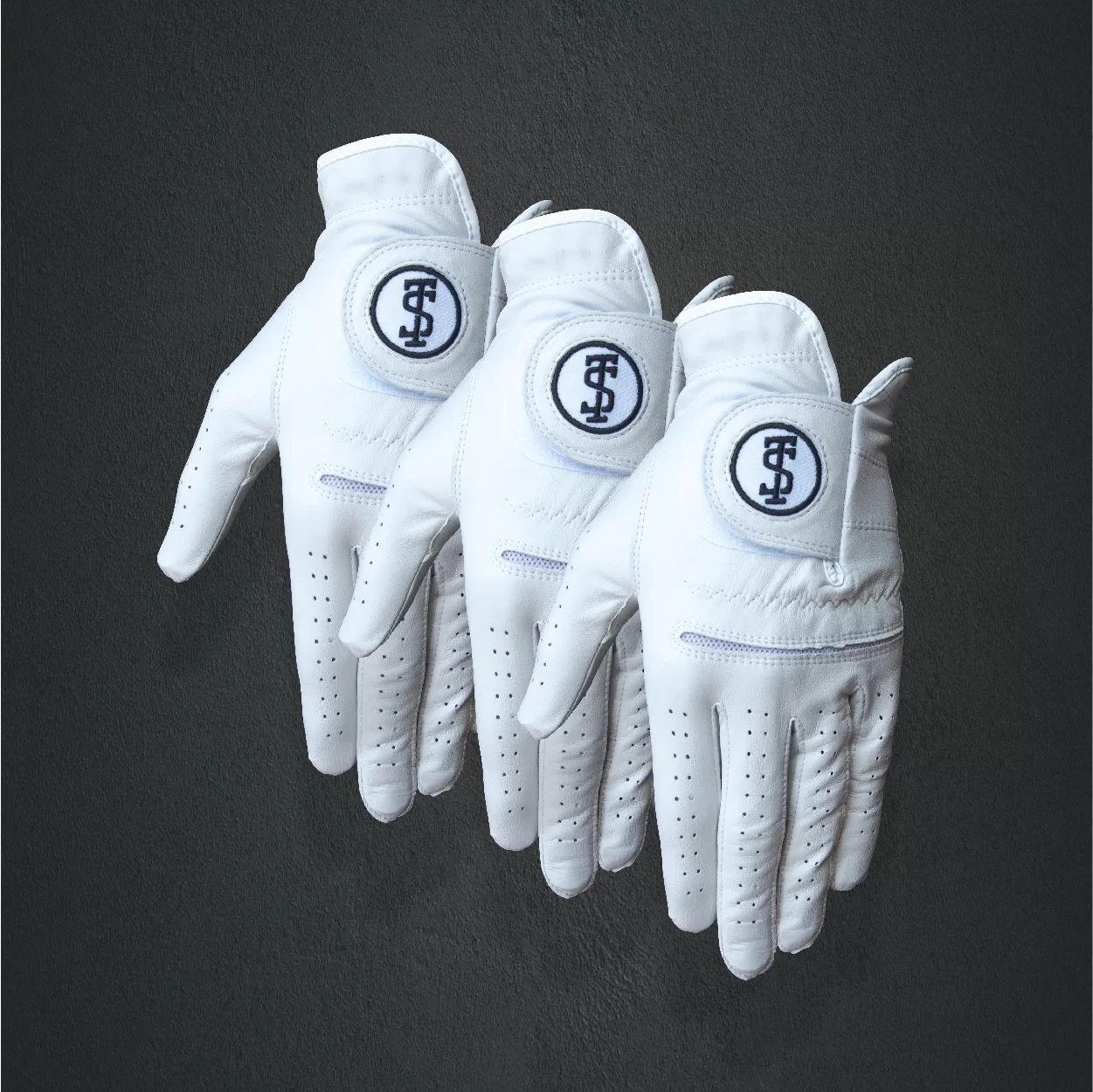
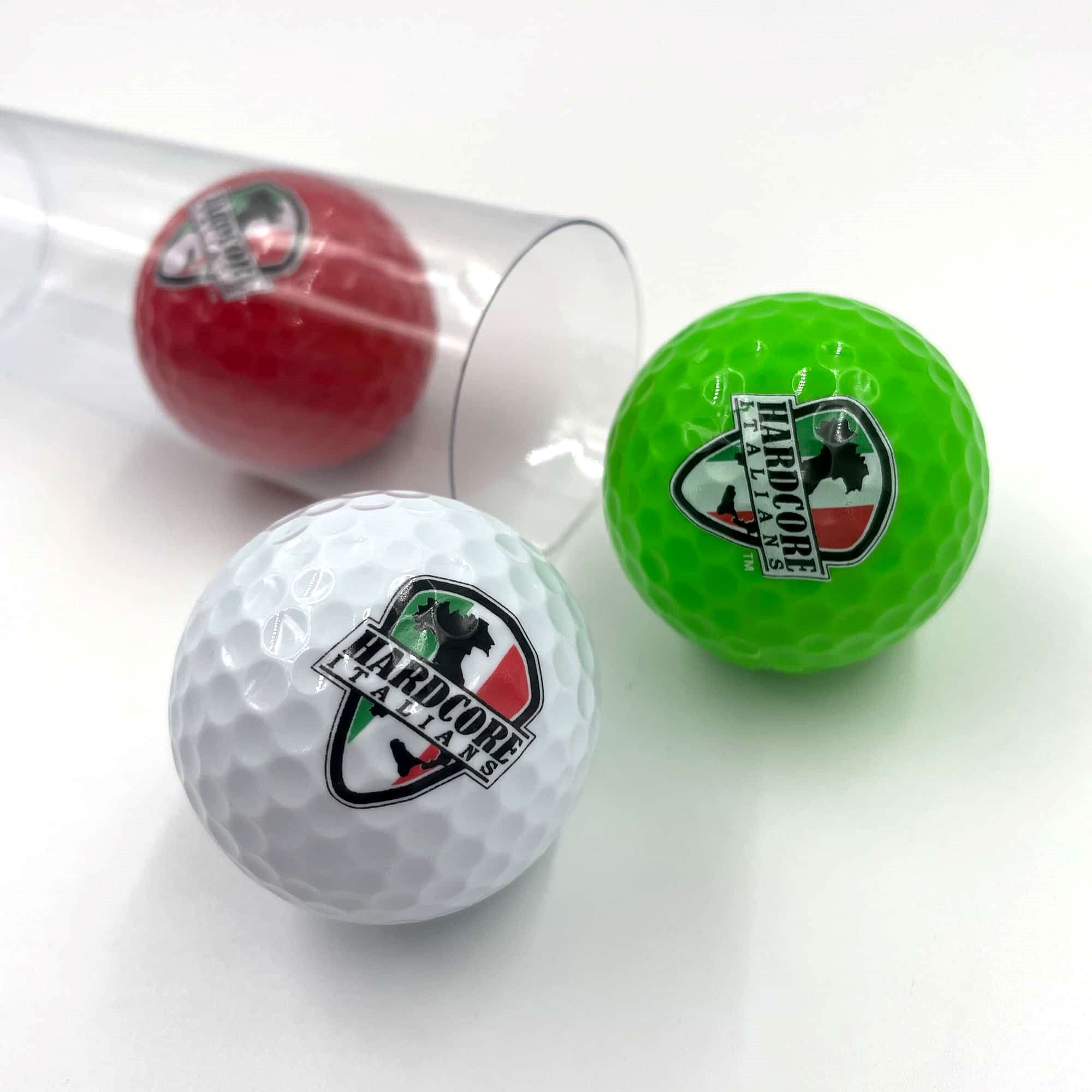
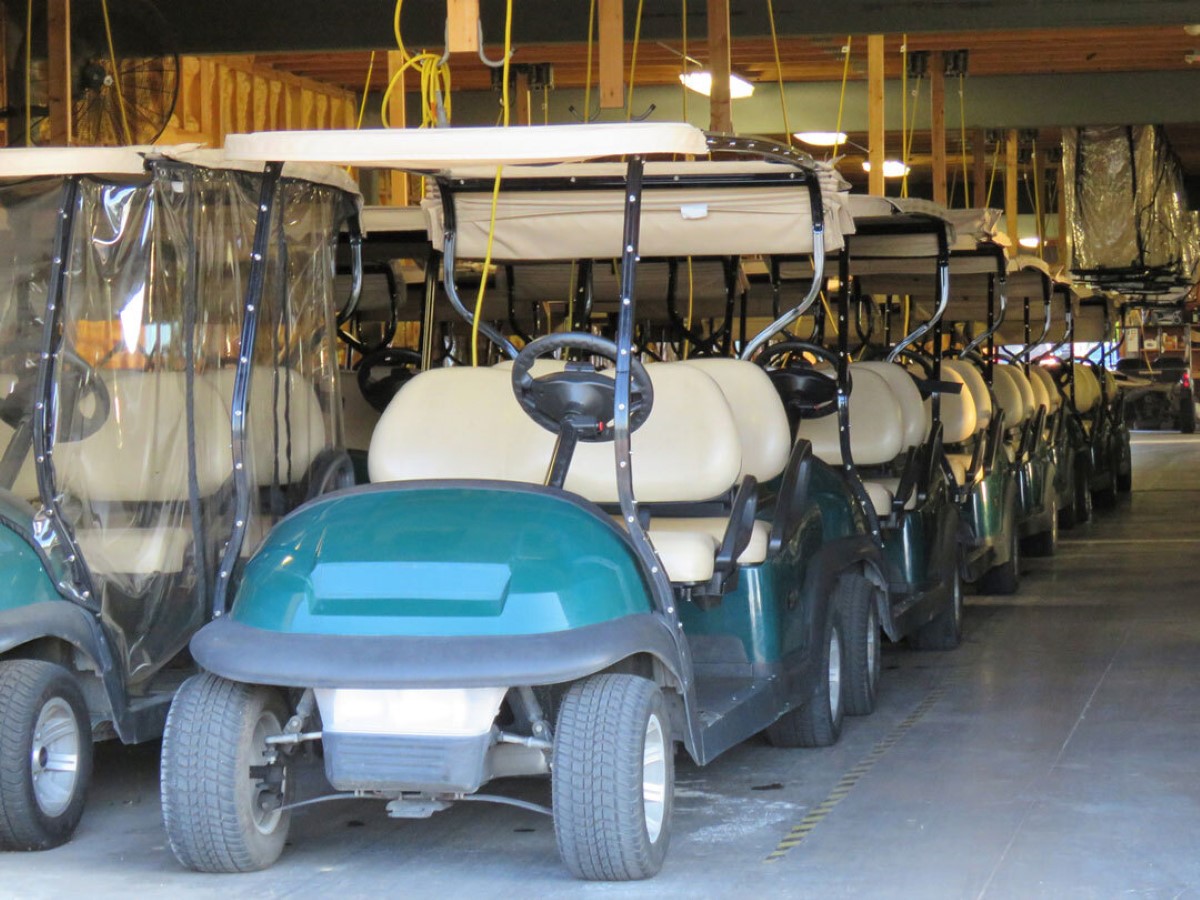
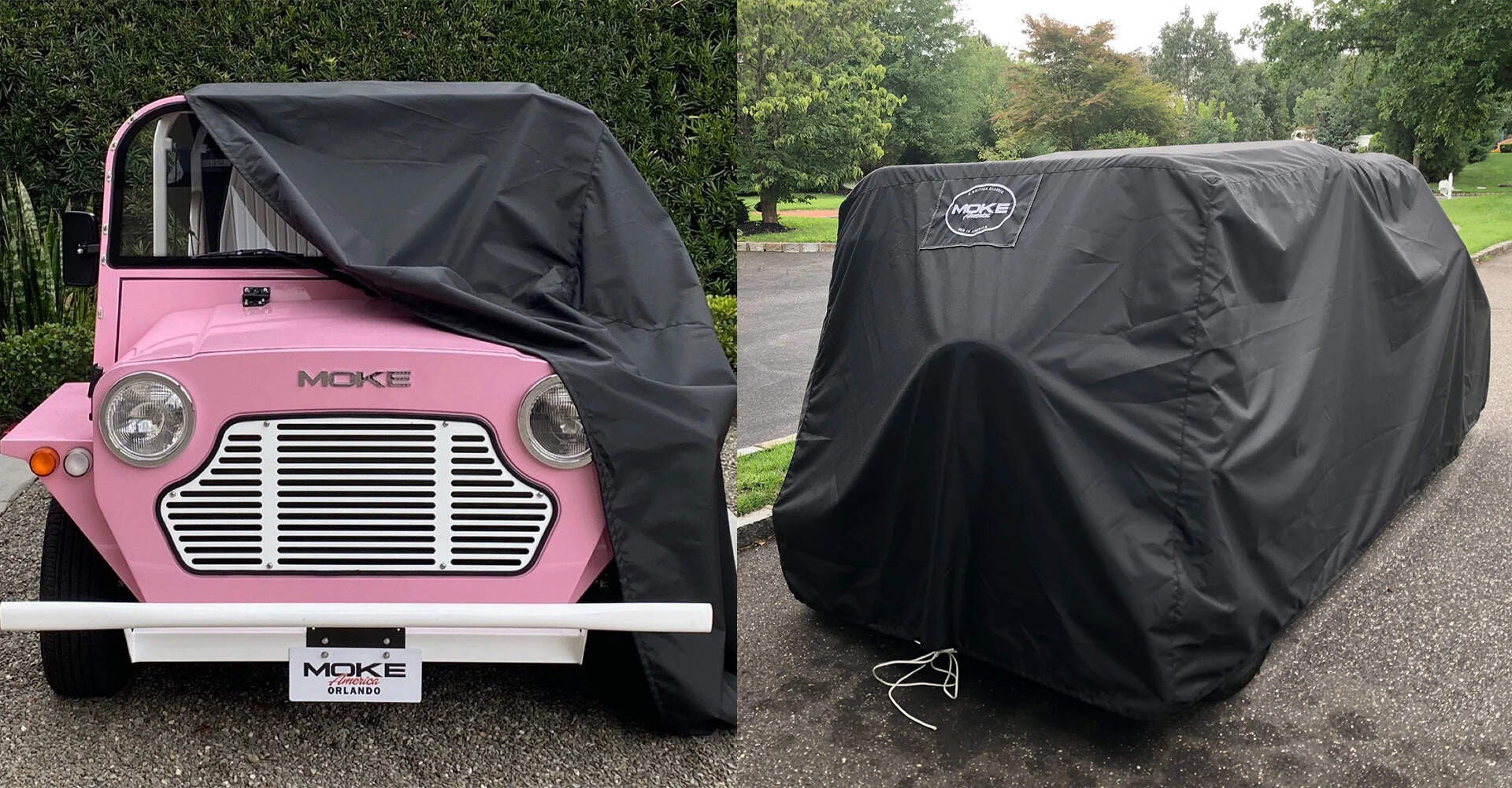


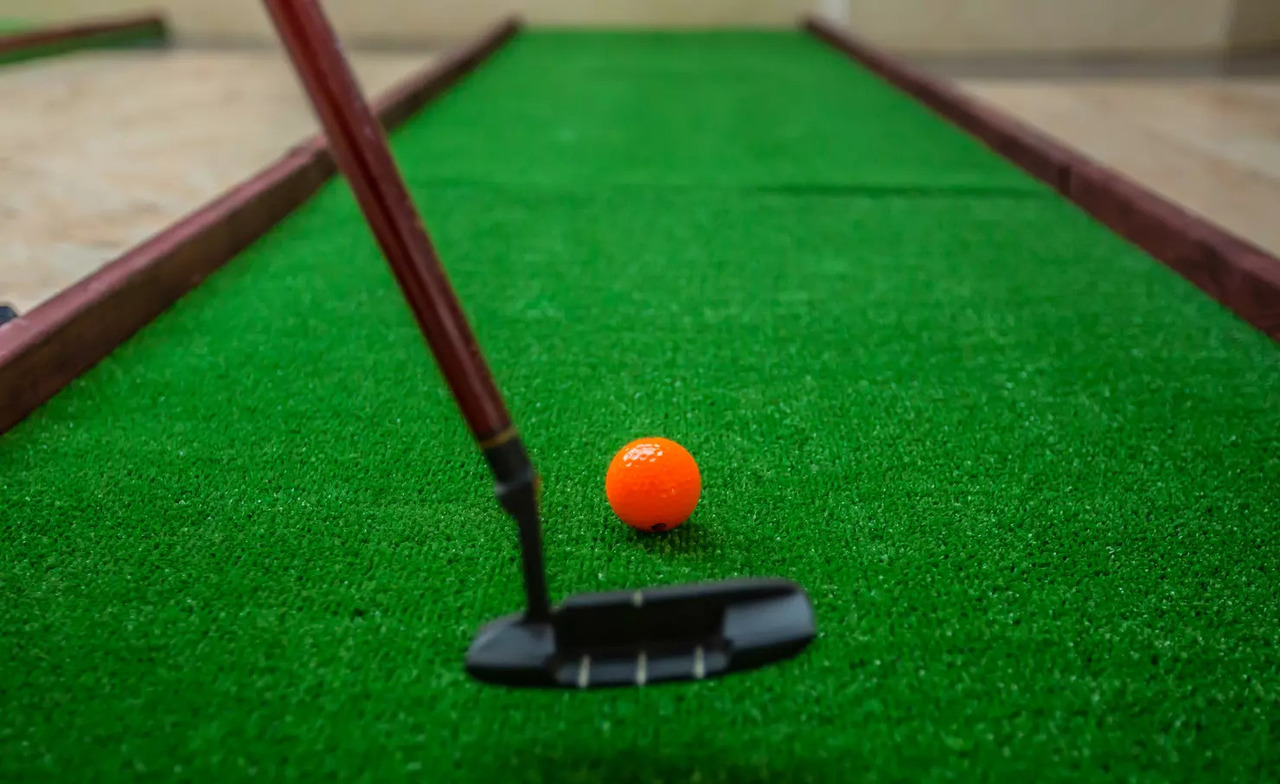
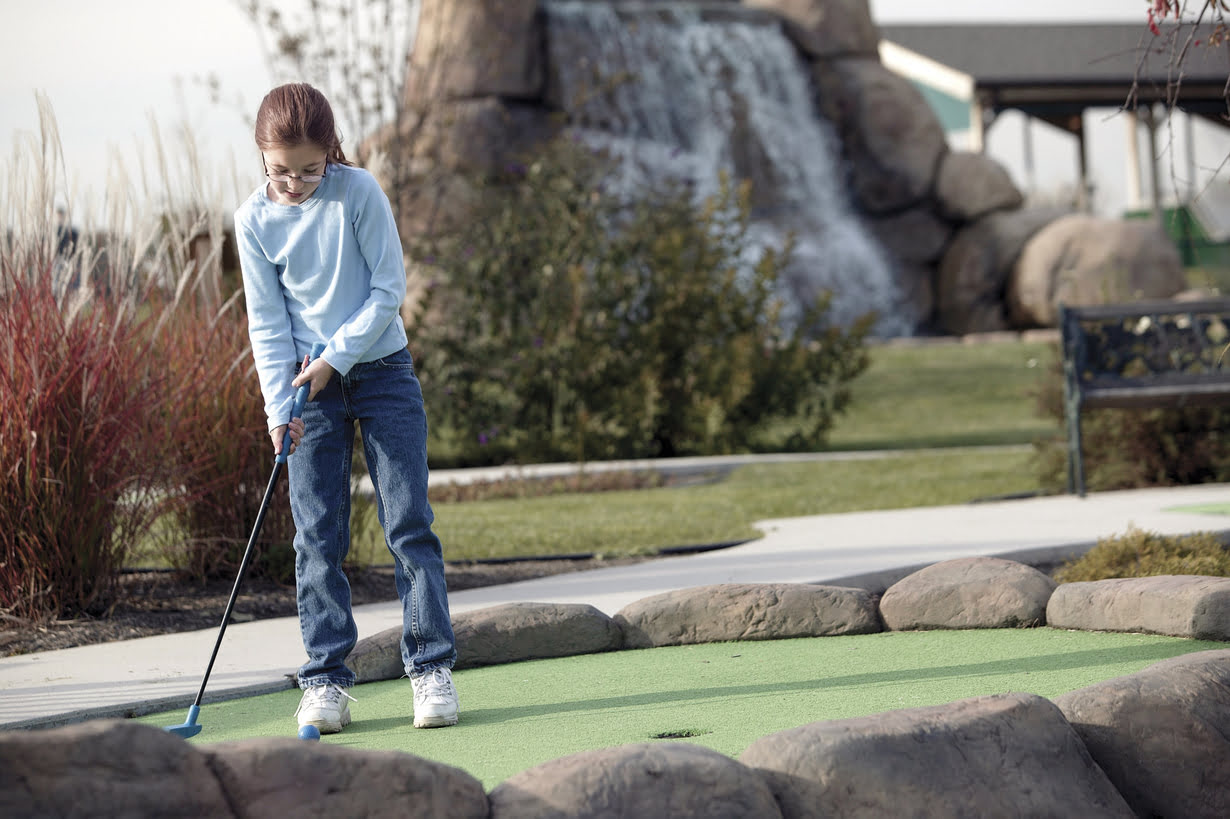
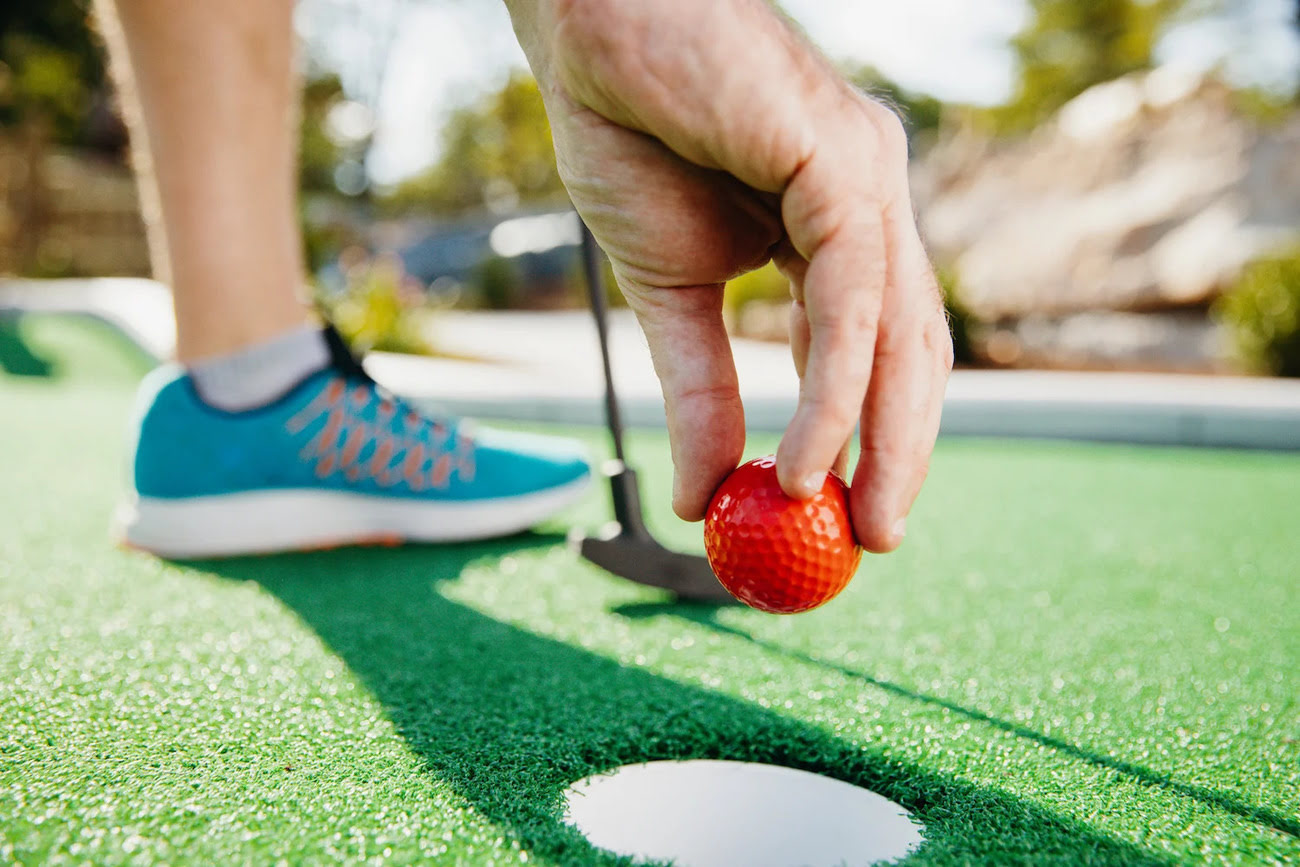

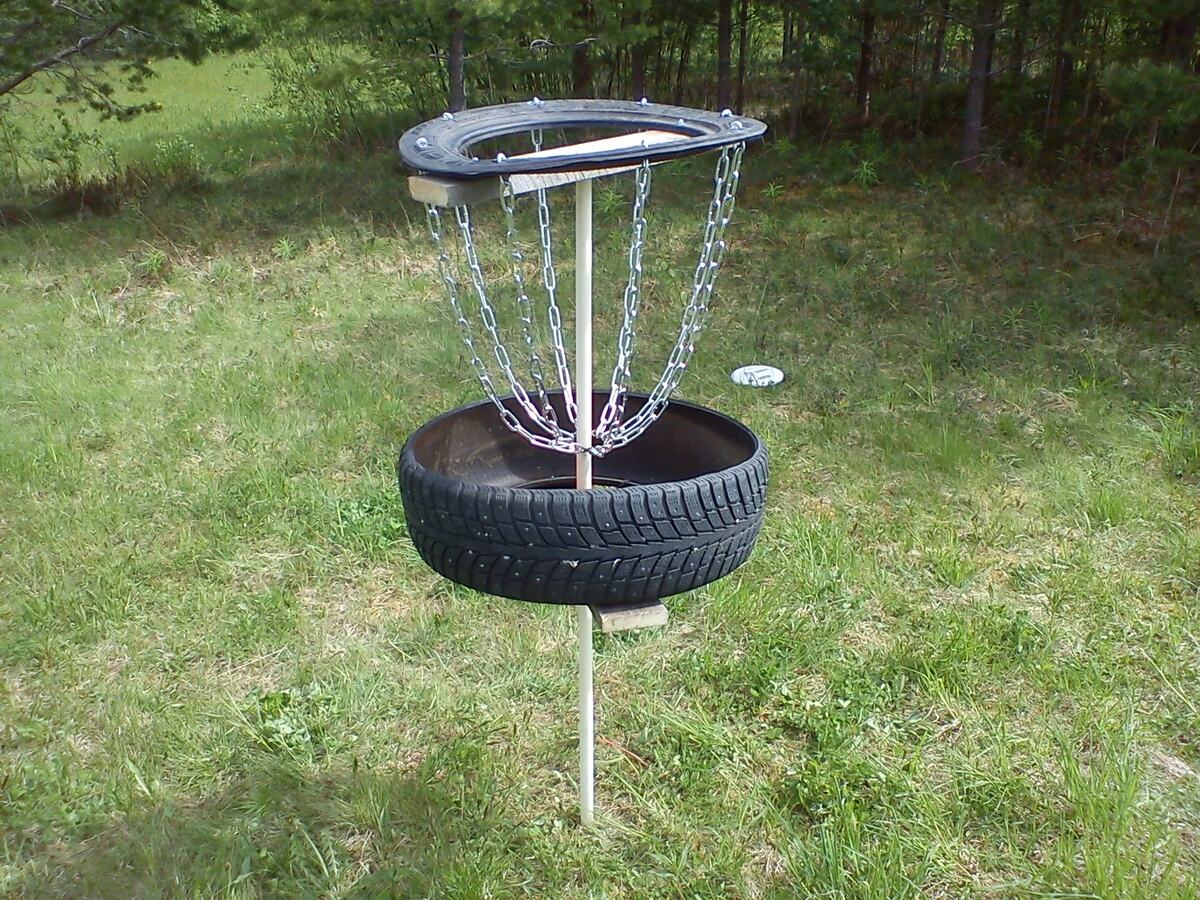

0 thoughts on “How To Store Golf Clubs”